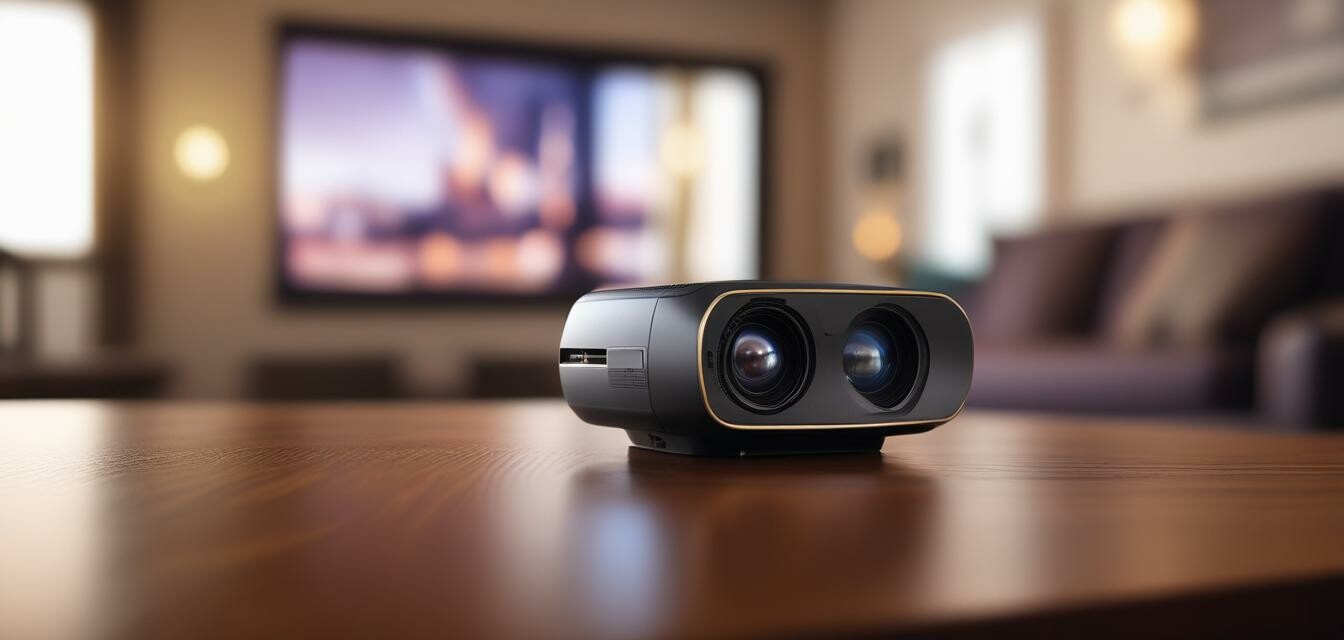
Top Features to Look for in Portable Projectors
- Portability is key: weight and size matter.
- Brightness (measured in lumens) impacts image quality.
- Connectivity options enhance versatility for streaming and presentations.
- Battery life is essential for on-the-go usage.
- Resolution significantly affects image clarity.
When it comes to selecting a portable projector, not all models are created equal. Whether you're planning to use it for business presentations, movie nights, or outdoor gatherings, understanding the essential features that enhance functionality and portability can make all the difference. This guide will explore the must-have features to consider when choosing a portable projector.
1. Size and Weight
The first and foremost consideration is the size and weight of the projector. A truly portable projector should be lightweight and compact enough to travel easily.
| Model Type | Weight | Dimensions | Portability Rating (1-10) |
|---|---|---|---|
| Ultra Compact | Under 1.5 lbs | 5 x 5 x 2 inches | 10 |
| Compact | 1.5 - 3 lbs | 6 x 7 x 3 inches | 8 |
| Standard | 3 - 5 lbs | 8 x 10 x 4 inches | 6 |
2. Brightness
The brightness of a projector is measured in lumens. This factor is crucial, particularly for outdoor use or well-lit rooms. Here’s a quick breakdown:
- Under 1000 lumens: suitable for dark environments.
- 1000 - 2500 lumens: good for dimly lit rooms.
- Over 2500 lumens: ideal for bright rooms or outdoor use.
3. Resolution
The resolution of the projector affects the overall image quality. Key resolutions to consider include:
- 480p: basic quality, suitable for casual viewing.
- 720p: HD quality, great for movies and presentations.
- 1080p: Full HD, offers crisp and clear visuals.
- 4K: best quality, perfect for serious cinema enthusiasts.
4. Connectivity Options
Modern projectors must have diverse connectivity options to facilitate easy pairing with various devices. Look for:
- HDMI Ports: essential for most devices.
- USB Ports: enables direct file playback.
- Wireless Connectivity: allows for easy screen mirroring and streaming.
5. Battery Life
For outdoor use or presentations without access to a power outlet, battery life is crucial. A good portable projector should have:
- At least 2 hours: acceptable for short presentations.
- 3-5 hours: ideal for movies and longer use.
- Power bank compatibility: enhances portability and usability.
6. Sound Quality
While many portable projectors have built-in speakers, the sound quality can vary significantly. Consider the following:
- Built-in Speakers: good enough for casual use.
- External Audio Output: allows for superior sound systems.
- Bluetooth Capabilities: for wireless audio streaming.
7. Image Correction Features
For versatile setup options, look for image correction features such as:
- Keystone Correction: adjusts image distortion.
- Auto-Focus: ensures clear visuals.
8. Additional Features
These features can greatly enhance the user experience:
- Smart Functionality: built-in apps for streaming.
- Carrying Case: adds convenience for travel.
- Remote Control: for easier navigation.
Pros
- Compact and lightweight designs
- Versatile connectivity options
- Long battery life
- High resolution for crisp visuals
- Multiple usage scenarios (indoor/outdoor)
Cons
- Potential trade-off on sound quality
- Higher price for advanced features
- Limited connectivity in older models
In conclusion, selecting a portable projector involves weighing multiple factors that directly impact its functionality and usability. Remember, each use case – be it for home entertainment, business presentations, or outdoor movie nights – may highlight certain features as more important than others. Check out our other guides in the Buying Guides category for more insights and tips on making an informed choice.

